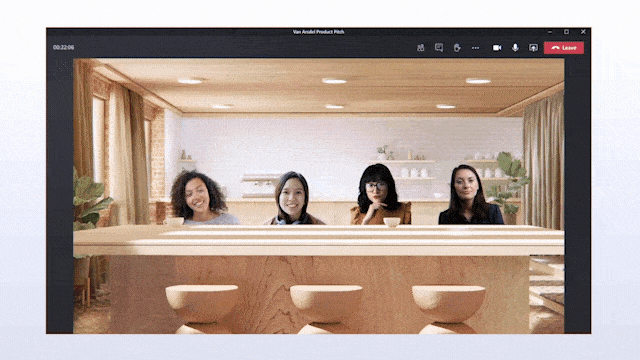Forget Zoom — Microsoft Teams is getting a ton of killer new features

Microsoft Teams is getting some fun new features that let you pretend your daily meetings are something more exciting than just yet another video call.
The new features were announced today at Microsoft's Ignite 2020 developer event, and are covered in detail in Microsoft's blog post. But the headline here is that the rows of squares containing your colleagues will be a lot more interesting and dynamic to look at and interact with once these updates roll out.
- Zoom just launched these huge new features
- New Amazon Echo Show 10 revealed— and it follows you around
- Just in: New Chromecast with Google TV fully revealed in hands-on video
The most visually interesting incoming change is the new "Together mode" scenes. This lets users transpose their webcam footage into an image of a more normal environment, such as a coffee shop, meeting room or lecture theater.

Related is the ability to customize meeting layouts. Microsoft gives the example of putting your camera feed in front of your presentation slides, letting you present your content more personally than you could as just a voice-over.
Meetings can also be broken up into sub-groups, or "breakout rooms" to use Microsoft's jargon. You'll be able to keep all participants on a single call, but send them away to discuss things in separate teams, then call them back in when it's time.
A handy new feature for people who couldn't attend a meeting is the Meeting Recap, which collects together a recording, transcript, chat messages and shared files into a single place to help people catch up or remind themselves of what needs to be done.
As for meeting capacity, Teams will soon be able to support up to 1,000 users, with 20,000 allowed for view-only gatherings. For comparison, Zoom only offers 1,000 users when you specifically buy the "Large Meeting" add-on; otherwise you're stuck with 500. Google Meet only goes up to 250 in a normal meeting but can live stream to up to 100,000.
Get instant access to breaking news, the hottest reviews, great deals and helpful tips.
Also in the offing are more third-party app integrations, first announced earlier this year. The first 20 that Microsoft has approved will go live in October, and promise to add even more functionality to meetings, where previously the best you could do was screen-share.

Richard is based in London, covering news, reviews and how-tos for phones, tablets, gaming, and whatever else people need advice on. Following on from his MA in Magazine Journalism at the University of Sheffield, he's also written for WIRED U.K., The Register and Creative Bloq. When not at work, he's likely thinking about how to brew the perfect cup of specialty coffee.
